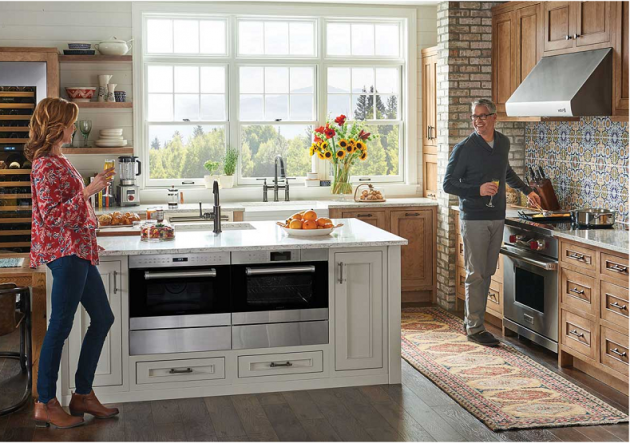When you start shopping for a new cooking appliance, you’ll find yourself with an array of features and cooking styles to choose from. Each of these has pros and cons, with seemingly complex terminology that can hinder your purchasing decision process, so let’s break down some of these cooking styles and terms to help you determine which is the best option for your kitchen.
Convection
Convection cooking involves moving the air around inside the oven to distribute the heat evenly. Many of us have had a bad experience with a turkey that is golden brown on one side and pink on the other, or a cake that has only risen beautifully in certain areas. On its own, a convection oven uses a fan to move the hot air around the oven cavity, filtering the air through an exhaust system at the back of the appliance. This allows faster cooking times to save energy and time while achieving even cooking. Convection is great for most baking, but the dry environment may not work well for some recipes and delicate dishes, such as soufflés, can suffer from a lack of slow and steady cooking.
Steam
While convection is fantastic for roasting, baking, and toasting, if you want to moisten food, steam is the best option. Steam cooking can also provide a healthier option as the nutrients and moisture of the food is preserved. It can also be an excellent way to reheat food as it won’t dry out.
Steam ovens feature a water reservoir that holds water. Through the heat of the oven, this is converted into steam. Steam ovens can be used to proof bread, allow oil-free cooking and encourage perfect results for delicate items such as choux pastry, but steam cannot manage heavy cooking duties and will take a long time to cook full meals. For this reason, many manufacturers offer Steam Convection cooking appliances.
Steam Convection
Steam convection provides the best of both cooking styles. Steam can allow you to cook delicate items that may dry out or easily burn, but convection allows you to effectively brown your foods. The convection cooking moves the heat around, while steam can add moisture, so whatever dish you are preparing, you’ll have the ideal oven conditions.
Speed Ovens
If you need to cook on the go and don’t have the time to wait around in your kitchen, you may wish to consider a speed oven. The speed oven is considered one of the fastest cooking appliances on the market. As the name suggests, these ovens cook food at a far more rapid rate using relatively new technology. This innovative cooking method uses a combination of convection and microwaving. The convection method ensures that heat is created and evenly distributed throughout the oven, while the RF microwaving increases the rate of cooking. The microwave to convection ratio depends on the type of food you’re preparing and the selected cycle.
Speed ovens are fantastic time saving and multipurpose appliances. You can cook a full-size turkey in approximately 20 minutes, so it can make preparing family dinners super-fast and easy.
Cleaning and Maintenance
While cooking style is important, another consideration is maintenance, particularly cleaning. Steam naturally prevents the baking on of food, so it is easier to clean. This feature is not available with a speed or convection oven, so accidental spills can be problematic. Fortunately, some models do have a self-cleaning function to vaporize any food gunk with the minimum of fuss.
If you’re thinking about a new oven, you can explore the options with this online collection or speak to a home appliance professional for more specialized service.

